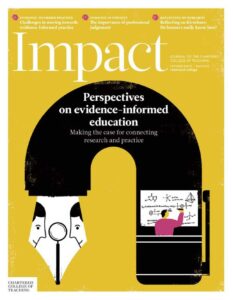Promoting autism peer awareness in mainstream schools


Claire Droney focuses on research into SEND-awareness education to inform the development of an autistic peer awareness programme.
‘Autism is where children or adults get very angry and violent’, wrote one Year 4 student.
‘It’s when a person holds a lot of anger and can’t keep it inside’, wrote another.
When asked ‘What is autism?’, a group of Year 4 children had some interesting answers. We weren’t surprised. These students’ only experience of autism was with a highly-anxious peer who had frequent meltdowns in class. But would their opinions change after completing our five-week Autism Peer Awareness (APA) programme?
Difficulties with social communication, interaction and flexible thinking can cause friendship issues for our children and young people with autism in mainstream schools. With 70% of autistic students being educated in mainstream schools in the UK, we knew that we needed to spread awareness about this ‘hidden’ disability.
Our aim at the Bridge School was to create a series of lesson plans specifically about autism that would encompass the best of all the available programmes, as detailed by Lindsay and Edwards (2013).
Completely based on advice given in the adjacent research article, we developed a five-session Autism Peer Awareness programme to roll out to Year 4 and 5 mainstream classes. This included:
- Two class-based sessions, including discussions about how we are all different; visible and hidden disabilities; a case-study of Ravi, a fictional boy with autism; celebrating the strengths of people with autism; highlighting well-known people with autism; and learning to use Makaton and PECS.
- A visit for 10 students to the Bridge Primary School (a special school for students aged two to 19 years with severe or profound learning difficulties and/or autism) to interact with the school cohort.
- A class presentation of an assembly to the whole school about what they had learned.
All participating students answered a 15-question pre- and post-programme questionnaire.
Out of 23 students in the Year 4 class discussed above, 12 mentioned ‘anger’ when asked ‘What is autism?’ At the end of the programme, only two mentioned it. Most responses also displayed a greater understanding of autism, e.g. ‘It is a hidden disability’, ‘It is when they have trouble with their senses’ and ‘When they can’t make friends easily’.
The teacher commented that reading the case study particularly clarified for the students what it was like to have autism: ‘It was like a light bulb went on when they saw Ravi,’ she said.
The child with autism’s answers had changed too by the end of the programme. When initially he wrote that autism was ‘When everything is really loud and you can’t look at people’, his answer afterwards was ‘It’s how minds think differently’.
The research article concluded that a whole-school approach to disability awareness (including head teacher, governors and teaching staff, as well as all pupils) is more powerful than involving just one class. With this in mind, we now deliver 20-minute, one-off assemblies to different year groups in a school, which has worked well in secondary schools. During World Autism Awareness Week 2017, we created a poster campaign (via email, Twitter and Facebook) aimed at teaching staff, which outlined our top five strategies for teaching children with autism. We have also developed Autism Awareness Packs for primary and secondary schools (including links to online video clips and recommended reading for both adults and students), which are available on the Bridge School website.
With the numbers of children on our caseloads having doubled over the past two years, and with ongoing proof that our APA programme is having some impact, we plan to continue improving and disseminating it. Especially when it stimulates answers like this:
‘True or False: Children with autism can become doctors or teachers when they are older.’
‘True’ circled one student, with the addendum ‘If you believe you can do something, you can achieve’, written in a childish scribble.
References
Lindsay S and Edwards A (2013) A systematic review of disability awareness interventions for children and youth. Disability and Rehabilitation 35(8): 623–646.
Further Reading
The Children’s Society has carried out some interesting research on disability awareness in schools. The report ‘Disability equality: Promoting positive attitudes through the teaching of the National Curriculum’ can be found at: http://tinyurl.com/mq5qcnt
The Disability Action Alliance website has helpful resources for schools in all phases interested in raising awareness of disability and improving inclusive practices: http://disabilityactionalliance.org.uk/resources/disability-awareness-for-children/
This article was published in May 2017 and reflects the terminology and understanding of research and evidence in use at the time. Some terms and conclusions may no longer align with current standards. We encourage readers to approach the content with an understanding of this context.










